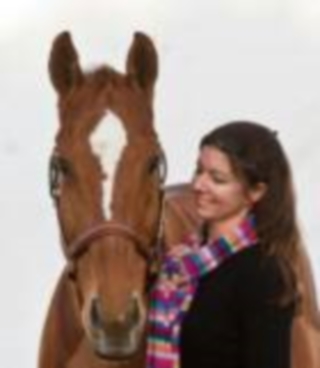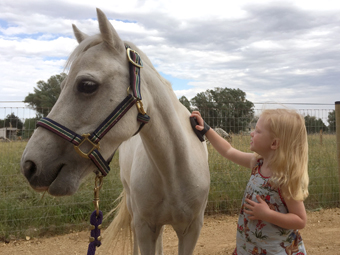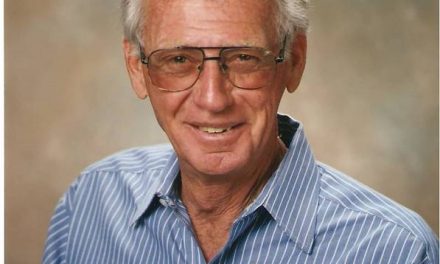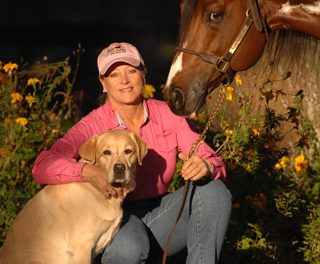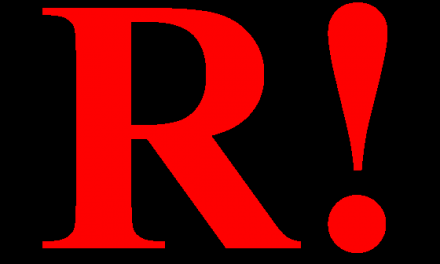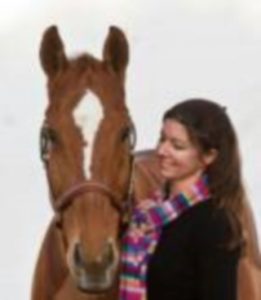
Dr. Joanna Robson
The health of our dressage sport horses is completely dependent on the quality of our preventative care, and the diagnostic modalities available when an injury occurs. As veterinarians, we rely on our hands for palpation, our experience to identify patterns, and our tools — from nerve blocks to MRI — to identify problems. But not everyone can afford the “do whatever it takes” approach, and there are certain risks associated with traditional modalities, such as x-ray radiation, and general anesthesia complications. Thermal imaging provides a safe, fast, and physiologic screening tool that can localize lesions, be used as preventative maintenance, aid in saddle-fitting, and provide additional information at pre-purchase examinations.
Thermal imaging was first introduced to the equine industry approximately 40 years ago. The infrared camera’s arrival on the equine scene paralleled that of ultrasound, and thermography fell out of favor against the anatomic diagnostic ultrasound modality. Why? Because no one fully understood how to use it, the cameras were cumbersome and expensive, and there was no standardization of patient or environmental preparation. As time has passed, much like advancement in cell phone and laptop technology, thermal imaging cameras have progressed to be more affordable, extremely sensitive, hand-held devices that can quickly aid the practitioner to perform a whole horse scan. More importantly, there is an understanding of how to correctly obtain, and interpret, the final images.
Diagnostic modalities are divided into anatomic and physiologic imaging. An anatomic modality is one that can tell you in what structure the problem is located. Traditional radiographs (x-ray), ultrasound, Computed Tomography (CT Scan), and Magnetic Resonance Imaging (MRI) are considered anatomic imaging. Physiologic imaging identifies changes in metabolism, which may indicate areas of inflammation or decreased perfusion. Nuclear scintigraphy (Bone Scan) and Thermography are the two physiologic modalities. These may need to be followed up with an anatomic imaging tool, but the advantage is localization of lesions in the whole horse. Thermal imaging has further advantages of being completely safe – no radiation exposure, a scan can be done easily at the farm (no lengthy hospital stays for radiation clearance), no sedation or anesthesia is required, and a whole horse can be scanned in as little as 20 minutes when properly prepared. Most importantly, thermal imaging is cost effective, averaging $300-$400 for a whole horse scan and veterinarian interpretation
What you can’t see, does hurt your horse. Our human eye is limited to seeing the visual light scale. Infrared waves are emitted by all things, but are at a wavelength that is outside the human eye’s visible spectrum. The thermal imaging camera converts these waves into an image visible with the human eye. Heat emitted by the body is directly related to circulation, and hence increased circulation may be inflammation, and cooler areas may be atrophied, devoid of proper circulation, or have nerve damage. The human hand is only sensitive to a 2F degree difference in temperature, while the thermal imaging camera is able to detect differences as small as 0.1 degree. Temperature differences as small as 1 degree are considered clinically significant.
The dressage horse, from training level to Grand Prix, can benefit from a thermal imaging scan. While your horse may be performing soundly without perceptible issues, the camera may detect areas of soft-tissue inflammation up to two weeks before clinical lameness occurs! Saddle-fitting and rider balance problems are also quickly detected, and serial imaging to monitor healing of an injury makes thermal imaging an invaluable tool.
In addition to physiologic injury, ill-fitting equipment will significantly hinder the dressage horse’s ability to perform. Thermal imaging is not a substitute for the expertise of a Certified Master Saddler, or a Certified Saddle-Fitter, but the objective image quickly provides evidence of saddle or rider imbalance, and helps the rider to understand why the horse cannot do what is asked of him. Pressure points from pinching trees, damage to shoulders and loins from bridging saddles, and patterns of twisting or falling, are all readily seen. Imaging before and after a saddle re-fitting is also helpful to ensure a proper fit.
In the image at left, the effects of a bridging saddle are readily seen. A bridging saddle puts pressure at the front and rear of the saddle, with no contact under the horizontal panels, creating a very painful back for the horse. The red points are heat created by pressure from a tree that is too narrow, and rear panels putting painful pressure into the horse’s back and against the spine.
Dressage and jumping horses are under particular stress and strain in the hind-quarters. Tarsitis (inflammation of the hock), and pain in the spine and sacroiliac regions are common for these athletes. The thermal imaging camera can detect inflammation in these joints and soft-tissues, and help to guide treatment of maintenance therapies to ensure continued performance. Hock arthritis, spinal arthritis, paraspinal muscle inflammation, ligament injury, and stifle inflammation, are other examples of detectable changes.
At left, the patient has a white hot spot (circled) over the hock joints in the left hind limb. Radiographs confirmed the presence of a large bone spur in the joint.
In addition to detecting “hot spots” thermography is equally effective at finding problems with decreased circulation. These cooler regions may be due to nerve damage or increased sympathetic tone, or blockage to normal blood flow. Traumas, local medications, compensatory problems, and scar tissue, may all create patterns detectable with thermography. Thermal imaging is also useful for farriers to determine hoof balance, abscesses and hoof bruises, and other hoof health problems.
Some specific major common diseases or pathologies resulting in decreased performance, lengthy rehabilitation, or retirement include:
• Suspensory ligament tears
• Tendon tears
• Sacroiliac problems
• Arthritis
• Muscle pulls, tears, strains, avulsions
• Damage from ill-fitting saddles and tack, imbalanced riders
• Kissing spine, other primary spinal lesions
• Fractures
• Cervical problems
• Nerve damage
• Circulatory problems
• Infection/abscess
• Hoof problems – ringbone, laminitis, imbalanced hooves
This list is important, as each of these problems causes circulatory or inflammatory changes that can be detected with a thermal imaging camera!
This article is merely an introduction to the uses of this safe, non-invasive technology. Individuals interested in becoming a trained equine thermographer are able to attend certification courses, but veterinarians experienced in thermal imaging are necessary for image interpretation due to the practice acts in many states. For more information, or to find a certified technician in your area, please visit www.inspiritusequine.com, www.equineir.com, or www.ieinfrared.com.
Joanna Robson, DVM, CVMST, CVA, CSFT, CIT
Inspiritus Equine, Inc., www.inspiritusequine.com

